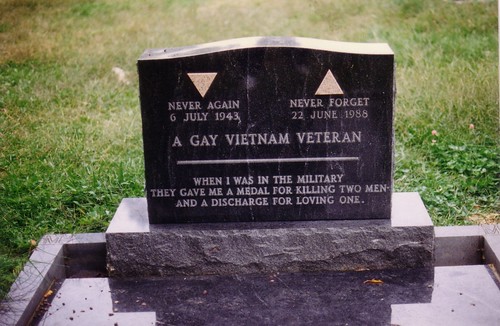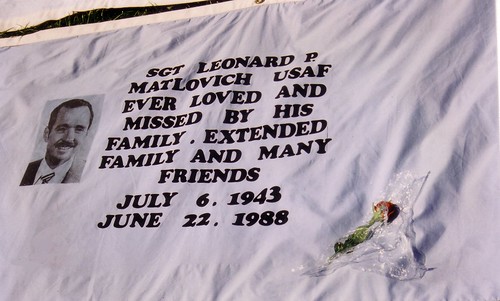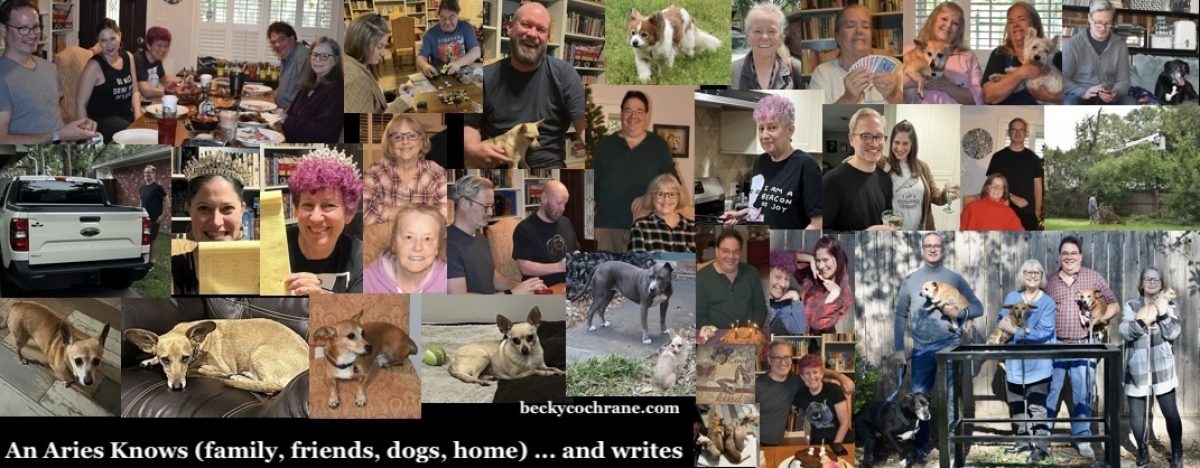When Tom, Amy, and I went to Washington, D.C. in October 1996 as volunteers for what has been (to date) the last full display of the NAMES panels of the AIDS Memorial Quilt, there were several sites on our agenda to visit. We stayed in Georgetown (it was lovely) and used cabs (more expensive than New York) and the excellent subway system to get into, out of, and around the city. High points of the sightseeing part of our trip were the various memorials (Lincoln, Jefferson, Washington monument, the graves of the two Kennedys at Arlington, the Korean and Vietnam war memorials), the capitol, the White House, and several museums (historical and art).
It was in Washington that we discovered the marvels of Streetwise Maps. As helpful as the maps were, we also found that any time we stopped to study one, locals would also stop and ask us if they could help us find our destination. Never was “the kindness of strangers” more apparent than during those few very cold but magical days in the capital.
There was one place in particular that I wanted to go, and in those pre-Internet days, finding it presented a bit of a challenge. Fortunately, one of Amy’s Streetwise Maps came through for us. The place was the Congressional Cemetery. It was tucked away in what we were warned was a less than ideal neighborhood. We emerged from the subway in the late afternoon to find that the cemetery was a farther walk than we’d realized. It was cold, the sunlight was fading, and gray clouds threatened a drizzle. But Amy and Tom knew this was important to me, so they gamely kept going.
We finally arrived at the cemetery. We were disheartened by the general disrepair we saw. Broken monuments, crumbling stones. Weeds. This cemetery, in spite of being the resting place of U.S. senators and representatives, among other prominent Americans, had no “cachet,” so it seemed little was being done to take care of it. This was not a tourist spot. There were no crowds of people flocking here to honor the dead. This was a place where people who’d lived and dreamed and helped shape our country gave mute testament to how fleeting it all is.
As we walked, we became more certain that trying to find the particular grave I’d come to visit was futile. There was nothing to direct us. No guide or docent to help us. Although the wild beauty of the cemetery and its quietness after all the tourist spots had an appeal for me, it became impossible not to think of the reason I’d come to Washington. In decades to come, would the Quilt panels that we treated with such reverence, some of them panels honoring our friends, end up like these graves? Would they be tucked away in some remote place, the names on them meaningless, with no one to visit them or take care of them?
Near tears, ready to turn back the way we’d come, I saw a woman walking her golden retriever among the graves. I’m not the most outgoing of people, and I had little hope that she’d know what I was looking for. I let her get by me. Tom and Amy nudged me. Just ask!
I forced myself to follow her and ask if she came to the cemetery a lot. She smiled and said yes, she and others often came to walk their dogs there. When I mentioned that I’d been hoping to find a particular grave, she looked doubtful and asked whose. When I told her, her face brightened and she said, “Oh, that one’s easy!” She led us right to the grave. We thanked her then she hurried out, because we were right on the brink of sunset.
Tom, Amy, and I stared at the grave marker. I said a silent thank you and took a picture. Then we left the cemetery. The three of us agreed that these quiet moments were something we were all glad we’d done. The sadness and seeming futility had been balanced by the living presence of a woman and her dog, her willingness to stop, to smile, to help.
When researching to write this post, I found an article from the Washington Post about Congressional Cemetery. It seems that not long after our visit, the dog walkers decided to take action. Hundreds of them began paying for the privilege of letting their dogs off leash in the cemetery, raising much needed funds for its care. They began to raise awareness of the cemetery’s deterioration, and in 1997, the National Trust for Historic Preservation listed Congressional Cemetery as one of its eleven most-endangered historic sites.
Since then volunteers have been activated, and Congress has created a $2 million endowment and allocated several million dollars for vault repairs, tree removal and road fixes, said Linda Harper, chairwoman of the cemetery’s board. In the last 10 years, about a quarter of the vaults have been repaired, 300 new trees planted and more than 300 headstones restored, Harper said. While caretakers once had to worry about keeping visitors safe from “falling in a hole or having a monument falling on them,” Harper said, now they can spend time studying how they can best tell its story.
The repair of the cemetery hasn’t been without its problems, and because Congressional is privately owned, it continues to depend on donations. Still, its ongoing existence is in fact like the AIDS Quilt. Although the panels have become too numerous to be displayed in one place at the same time, they are being cared for and preserved with endless devotion. They are still exhibited around the world, just not all together. They can be seen on the web site, and the information that accompanied them by panelmakers is slowly being archived. They are not forgotten. Their names still matter.
I believe that even after my generation and the next is gone, there will always be someone to remember and honor the AIDS dead. I believe as long as stories are told about our heroes, there will be someone to thank the man whose grave I visited.
He was a decorated war veteran. He was a gay man who fought for his right to serve his country. He was also one of those lost to AIDS.
It comforts me to know that these days, his grave is kept company by dogs celebrating their living by running and barking and playing. I’m grateful that those dogs are accompanied by people who can show a visitor where to go to thank Leonard Matlovich and to reflect on the kindness of strangers.


I wish you all a good Independence Day. I’ll try not to feel daunted that the struggle for liberty and justice–for ALL–never ends.

WOW!! Thank you for sharing such a touching memory. I haven’t been to DC since senior year in high school.
I know it’s been a while since you commented, but I wanted to say you’re welcome. =)
Do you know how much I admire you? You’re the most thougthful person!!
What a fabulous post. I had tears in my eyes reading this. I wish all people could see things the way you do.
Happy 4th Becky, to you, and to everyone.
I know it’s been a while since you commented, but I wanted to say thanks for your good wishes. =)
*Tears*
Thank you for being you.
Likewise! Thank YOU, and you’re welcome. =)
Thank you for sharing this with us!
I know it’s been a while since you commented, but I wanted to say you’re welcome. =)
Again…you’ve written an entry that leaves me at a loss for words, yet brimming in emotion. Happy Fourth.
Thanks. (Can you tell I’m only just now getting back to comments from nearly two weeks ago?)
What more can I say, than thank you for remindinG us of our real heros.
I know it’s been a while since you commented, but I wanted to say you’re welcome. =)
thank you becky.
I know it’s been a while since you commented, but I wanted to say you’re welcome. =)
That’s such a fantastic story.
I was there (not at the cemetery, unfortunately, but at the NAMES Project display) in 1996 too, by the way.
It’s amazing how many people I’ve met in the decade afterward who were in D.C. then. This is one of the events I think about when I talk about a writer having a god’s eye view of things–seeing strangers unaware of one another and knowing that eventually, their paths will cross.
If we knew all those little moments in our lives, it would probably drive us mad, but it’s fascinating to find out about them later.
I have to share my own story of … well, I hesitate to say “providence,” but it was a little too coincidental to just be coincidence.
One of my aunts was friends with Tom Eyen (or, rather, I think she was friends with his boyfriend and with Tom by association) in the mid-to-late 1980s. When she heard that I was going to DC for the Quilt display, she asked if I would try to find Tom’s panel for her. But she didn’t have a panel number or, really, any additional information to offer. It was a “needle in a haystack” sort of proposal.
As it happened, within five minutes of arriving at the display site, I found the panel, just by happenstance. This was such a surreal moment, it’s difficult to even describe its impact. How often is it that one can ask “the universe” for a small favor and actually receive a concrete response?
It is surreal–after all, there were around 38,000 panels displayed at that time–but your story doesn’t surprise me at all. I hear them again and again.
Before I left for D.C., a friend said, “Maybe you’ll see D. there.” I laughed because the chances were slim considering the tens of thousands of people who’d be there for the display. The night of the candlelight march, among all those thousands of people, we ended up walking next to D. and his partner.
Ultimately, all we can do is be grateful for those moments of coincidence and serendipity, whatever force makes them happen. They’re part of the magic of life.
Thank you for sharing that. It’s amazing that so much gay history can be found in the little nooks of then world.
You’re welcome. =)
Well first, thanks for sharing, this is a very touching story and it was nice to come and read it again. Also … may I say Dog people rock!
Thank YOU. And yes, dog people do rock.